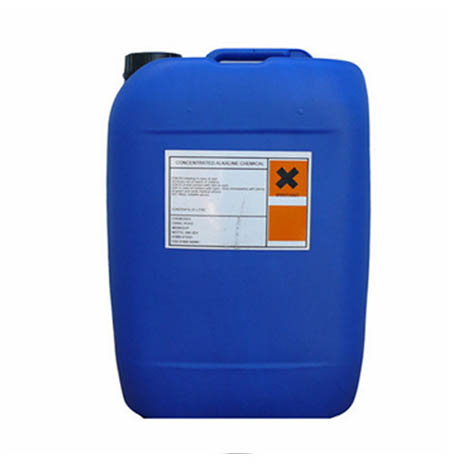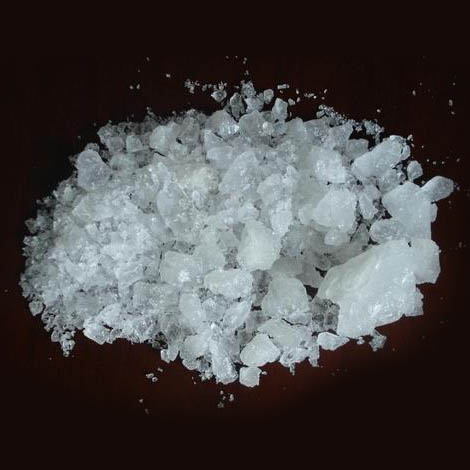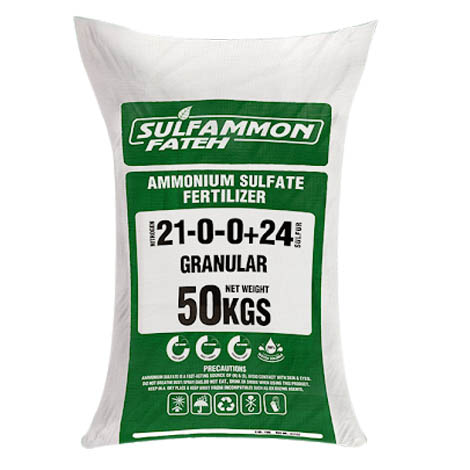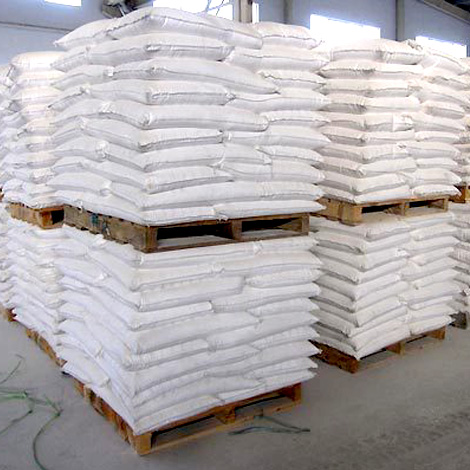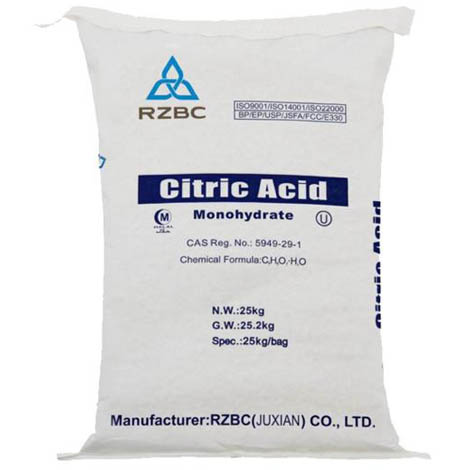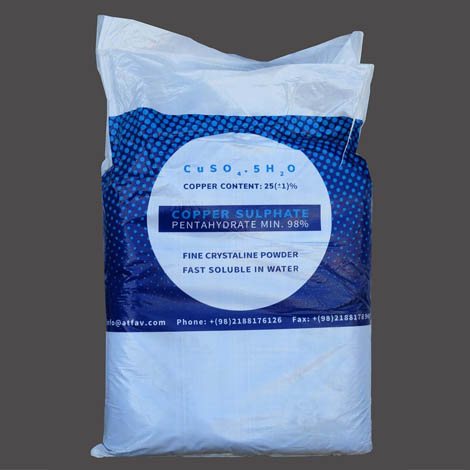Acetic acid
Acetic acid /əˈsiːtɪk/, systematically named ethanoic acid /ˌɛθəˈnoʊɪk/, is a colourless liquid organic compound with the chemical formula CH3COOH (also written as CH3CO2H, C2H4O2, or HC2H3O2). When undiluted, it is sometimes called glacial acetic acid. Vinegar is no less than 4% acetic acid by volume, making acetic acid the main component of vinegar apart from water. Acetic acid has a distinctive sour taste and pungent smell. In addition to household vinegar, it is mainly produced as a precursor to polyvinyl acetate and cellulose acetate. It is classified as a weak acid since it only partially dissociates in solution, but concentrated acetic acid is corrosive and can attack the skin.
Acetic acid is the second simplest carboxylic acid (after formic acid). It consists of a methyl group attached to a carboxyl group. It is an important chemical reagent and industrial chemical, used primarily in the production of cellulose acetate for photographic film, polyvinyl acetate for wood glue, and synthetic fibres and fabrics. In households, diluted acetic acid is often used in descaling agents. In the food industry, acetic acid is controlled by the food additive code E260 as an acidity regulator and as a condiment. In biochemistry, the acetyl group, derived from acetic acid, is fundamental to all forms of life. When bound to coenzyme A, it is central to the metabolism of carbohydrates and fats.
The global demand for acetic acid is about 6.5 million metric tons per year (Mt/a), of which approximately 1.5 Mt/a is met by recycling; the remainder is manufactured from methanol. Vinegar is mostly dilute acetic acid, often produced by fermentation and subsequent oxidation of ethanol.
Acetone 160 kg
History
Acetone was first produced by Andreas Libavius in 1606 by distillation of Lead(II) acetate.
In 1832, French chemist Jean-Baptiste Dumas and German chemist Justus von Liebig determined the empirical formula for acetone. In 1833, the French chemist Antoine Bussy named acetone by adding the suffix -one to the stem of the corresponding acid (viz, acetic acid). By 1852, English chemist Alexander William Williamson realized that acetone was methyl acetyl; the following year, the French chemist Charles Frédéric Gerhardt concurred. In 1865, the German chemist August Kekulé published the modern structural formula for acetone. Johann Josef Loschmidt had presented the structure of acetone in 1861, but his privately published booklet received little attention. During World War I, Chaim Weizmann developed the process for industrial production of acetone (Weizmann Process).
Activated carbon
Activated carbon, also called activated charcoal, is a form of carbon processed to have small, low-volume pores that increase the surface area available for adsorption or chemical reactions. Activated is sometimes substituted with active.
Due to its high degree of microporosity, one gram of activated carbon has a surface area in excess of 3,000 m2 (32,000 sq ft) as determined by gas adsorption. An activation level sufficient for useful application may be obtained solely from high surface area. Further chemical treatment often enhances adsorption properties.
Activated carbon is usually derived from charcoal. When derived from coal it is referred to as activated coal. Activated coke is derived from coke.
Uses
Activated carbon is used in methane and hydrogen storage, air purification, solvent recovery, decaffeination, gold purification, metal extraction, water purification, medicine, sewage treatment, air filters in respirators, filters in compressed air, teeth whitening, production of hydrogen chloride and many other applications.
Aksa Nobel Potassium Carbonate Germany
Potassium carbonate is the inorganic compound with the formula K2CO3. It is a white salt, which is soluble in water. It is deliquescent, often appearing as a damp or wet solid. Potassium carbonate is mainly used in the production of soap and glass.
History
Potassium carbonate is the primary component of potash and the more refined pearl ash or salts of tartar. Historically, pearl ash was created by baking potash in a kiln to remove impurities. The fine, white powder remaining was the pearl ash. The first patent issued by the US Patent Office was awarded to Samuel Hopkins in 1790 for an improved method of making potash and pearl ash.
In late 18th century North America, before the development of baking powder, pearl ash was used as a leavening agent for quick breads.
Aluminium chlorohydrate
Aluminium chlorohydrate is a group of specific aluminum salts having the general formula AlnCl(3n-m)(OH)m. It is used in cosmetics as an antiperspirant and as a coagulant in water purification.
In water purification, this compound is preferred in some cases because of its high charge, which makes it more effective at destabilizing and removing suspended materials than other aluminum salts such as aluminium sulfate, aluminium chloride and various forms of polyaluminium chloride (PAC) and polyaluminium chlorisulfate, in which the aluminum structure results in a lower net charge than aluminium chlorohydrate. Further, the high degree of neutralization of the HCl results in minimal impact on treated water pH when compared to other aluminium and iron salts.
Aluminum chlorohydrate is one of the most common active ingredients in commercial antiperspirants. The variation most commonly used in deodorants and antiperspirants is Al2Cl(OH)5.
Aluminum chlorohydrate is also used as a coagulant in water and wastewater treatment processes to remove dissolved organic matter and colloidal particles present in suspension.
Safety
The Food and Drug Administration considers the use of aluminum chlorohydrate in antiperspirants to be safe and it is permitted in concentrations up to 25%.
Aluminium sulfacetate
Aluminium sulfacetate is a mixture of aluminium salts dissolved in water with
Uses
It is an evenly balanced mixture of aluminium sulfate and aluminium acetate. It can be used as a mordant, which is a substance used to set dyes on fabrics that typically contains a polyvalent metal ion like aluminium or iron, In mixtures with basic aluminium diacetate or aluminium sulfacetate, aluminium triacetate has been used as a mordant with alizarin dye. In 1899, Albert Ganswindt recommended that the use of impure sulfacetates that are empyreumatic liquids "should be abandoned" in favour of pure preparations. Empyreuma is an obsolete chemical and medical term referring to "the smell and taste associated with burning vegetable and animal matter", and likely results in this case from the use of pyroligneous acid (wood acid) or wood acid lime in the preparation of the mordant.
Ammonium bicarbonate
Ammonium bicarbonate is an inorganic compound with formula (NH4)HCO3, simplified to NH5CO3. The compound has many names, reflecting its long history. Chemically speaking, it is the bicarbonate salt of the ammonium ion. It is a colourless solid that degrades readily to carbon dioxide, water and ammonia.
Uses
Ammonium bicarbonate is used in the food industry as a leavening agent for flat baked goods, such as cookies and crackers. It was commonly used in the home before modern-day baking powder was made available. Many baking cookbooks, especially from Scandinavian countries, may still refer to it as hartshorn or hornsalt, while it is known as "hirvensarvisuola" in Finnish, "hjortetakksalt" in Norwegian, "hjortetakssalt" in Danish, "hjorthornssalt" in Swedish, and "Hirschhornsalz" in German (lit., "salt of hart's horn"). Although there is a slight smell of ammonia during baking, this quickly dissipates, leaving no taste. It is used in, for example, Swedish "drömmar" biscuits and Danish "brunkager" Christmas biscuits, and German Lebkuchen. In many cases it may be replaced with baking soda or baking powder, or a combination of both, depending on the recipe composition and leavening requirements. Compared to baking soda or potash, hartshorn has the advantage of producing more gas for the same amount of agent, and of not leaving any salty or soapy taste in the finished product, as it completely decomposes into water and gaseous products that evaporate during baking. It cannot be used for moist, bulky baked goods however, such as normal bread or cakes, since some ammonia will be trapped inside and will cause an unpleasant taste. It has been assigned E number E503 for use as a food additive in the European Union.
Ammonium chloride
Ammonium chloride is an inorganic compound with the formula NH4Cl and a white crystalline salt that is highly soluble in water. Solutions of ammonium chloride are mildly acidic. Sal ammoniac is a name of the natural, mineralogical form of ammonium chloride. The mineral is commonly formed on burning coal dumps from condensation of coal-derived gases. It is also found around some types of volcanic vents. It is mainly used as fertilizer and a flavouring agent in some types of liquorice. It is the product from the reaction of hydrochloric acid and ammonia.
The dominant application of ammonium chloride is as a nitrogen source in fertilizers (corresponding to 90% of the world production of ammonium chloride) such as chloroammonium phosphate. The main crops fertilized this way are rice and wheat in Asia.
Ammonium chloride was used in pyrotechnics in the 18th century but was superseded by safer and less hygroscopic chemicals. Its purpose was to provide a chlorine donor to enhance the green and blue colours from copper ions in the flame.
It had a secondary use to provide white smoke, but its ready double decomposition reaction with potassium chlorate producing the highly unstable ammonium chlorate made its use very dangerous.
Ammonium sulfate
Ammonium sulfate (American English and international scientific usage; ammonium sulphate in British English); (NH4)2SO4, is an inorganic salt with a number of commercial uses. The most common use is as a soil fertilizer. It contains 21% nitrogen and 24% sulfur.
Uses
The primary use of ammonium sulfate is as a fertilizer for alkaline soils. In the soil the ammonium ion is released and forms a small amount of acid, lowering the pH balance of the soil, while contributing essential nitrogen for plant growth. The main disadvantage to the use of ammonium sulfate is its low nitrogen content relative to ammonium nitrate, which elevates transportation costs.
It is also used as an agricultural spray adjuvant for water-soluble insecticides, herbicides, and fungicides. There, it functions to bind iron and calcium cations that are present in both well water and plant cells. It is particularly effective as an adjuvant for 2,4-D (amine), glyphosate, and glufosinate herbicides.
Antiskalant
Inhibitor of salt sedimentations Antiskalant Vitek 3000 allows
to prevent formation of a deposit of slightly soluble inorganic compounds on a surface of membranes in systems of water treatment.
Antiskalant of the Vitec 3000 Brand for the membrane Filmtec elements of the Dow company.
Antiskalant of the ROPUR RPI-3000A Brand for the membrane TORAY elements.
The Antiskalant (antiskalyant, inhibitor of deposits) is intended for prevention of adjournment of a deposit which is formed by insoluble compounds of iron in water, carbonates of shchelochnozemelny and some other metals, on a surface of membranes water purification installations. This reagent is recommended for protection of polyamide membranes.
Application of an antiskalant in practice consists in exact dispensing of reagent in the initial water arriving on installation of the return osmosis (nanofiltration).
Our company at design and production of membrane installations uses two types of inhibitors of salt sedimentations (Antiskalantov) of the membrane elements recommended by producers.
Bleach
Bleach is the generic name for any chemical product which is used industrially and domestically to remove color from a fabric or fiber or to clean or to remove stains in a process called bleaching. It often refers, specifically, to a dilute solution of sodium hypochlorite, also called "liquid bleach".
Many bleaches have broad spectrum bactericidal properties, making them useful for disinfecting and sterilizing and are used in swimming pool sanitation to control bacteria, viruses, and algae and in many places where sterile conditions are required. They are also used in many industrial processes, notably in the bleaching of wood pulp. Bleaches also have other minor uses like removing mildew, killing weeds, and increasing the longevity of cut flowers.
Bleaches work by reacting with many colored organic compounds, such as natural pigments, and turning them into colorless ones. While most bleaches are oxidizing agents (chemicals that can remove electrons from other molecules), some are reducing agents (that donate electrons).
Chlorine, a powerful oxidizer, is the active agent in many household bleaches. Since pure chlorine is a toxic corrosive gas, these products usually contain hypochlorite which releases chlorine when needed. "Bleaching powder" usually means a formulation containing calcium hypochlorite.
Borax Pentahydrate
Sodium tetraborate pentahydrate Chemical Properties,Uses,Production
Uses
Used in large amounts in making insulating fi berglass and sodium perborate bleach.
Chemical Properties
Borax is a noncombustible (an inherent fire retardant), bluish-gray or green, odorless crystalline powder or granules.
General Description
White odorless crystals or free-flowing powder. Density: 1.82 g cm-3. Soluble in water (38 g / L H2O at 20°C). Used in the manufacture of fiberglass insulation and sodium perborate bleach.
Calcium carbonate
Calcium carbonate is a chemical compound with the formula CaCO3. It is a common substance found in rocks as the minerals calcite and aragonite (most notably as limestone, which is a type of sedimentary rock consisting mainly of calcite) and is the main component of pearls and the shells of marine organisms, snails, and eggs. Calcium carbonate is the active ingredient in agricultural lime and is created when calcium ions in hard water react with carbonate ions to create limescale. It is medicinally used as a calcium supplement or as an antacid, but excessive consumption can be hazardous and cause poor digestion.
Calcium chloride
Calcium chloride is an inorganic compound, a salt with the chemical formula CaCl2. It is a white coloured crystalline solid at room temperature, and it is highly soluble in water. It can be created by neutralising hydrochloric acid with calcium hydroxide.
Calcium chloride is commonly encountered as a hydrated solid with generic formula CaCl2(H2O)x, where x = 0, 1, 2, 4, and 6. These compounds are mainly used for de-icing and dust control. Because the anhydrous salt is hygroscopic, it is used as a desiccant.
By depressing the freezing point of water, calcium chloride is used to prevent ice formation and is used to de-ice. This application consumes the greatest amount of calcium chloride. Calcium chloride is relatively harmless to plants and soil. As a deicing agent, it is much more effective at lower temperatures than sodium chloride. When distributed for this use, it usually takes the form of small, white spheres a few millimeters in diameter, called prills. Solutions of calcium chloride can prevent freezing at temperatures as low as −52 °C (−62 °F), making it ideal for filling agricultural implement tires as a liquid ballast, aiding traction in cold climates.
It is also used in domestic and industrial chemical air dehumidifiers.
Calcium hydroxide
Calcium hydroxide (traditionally called slaked lime) is an inorganic compound with the chemical formula Ca(OH)2. It is a colorless crystal or white powder and is produced when quicklime (calcium oxide) is mixed, or slaked with water. It has many names including hydrated lime, caustic lime, builders' lime, slack lime, cal, or pickling lime. Calcium hydroxide is used in many applications, including food preparation, where it has been identified as E number E526. Limewater is the common name for a saturated solution of calcium hydroxide.
Uses
One significant application of calcium hydroxide is as a flocculant, in water and sewage treatment. It forms a fluffy charged solid that aids in the removal of smaller particles from water, resulting in a clearer product. This application is enabled by the low cost and low toxicity of calcium hydroxide. It is also used in fresh water treatment for raising the pH of the water so that pipes will not corrode where the base water is acidic, because it is self-regulating and does not raise the pH too much.
It is also used in the preparation of ammonia gas (NH3), using the following reaction:
- Ca(OH)2 + 2NH4Cl → 2NH3 + CaCl2 + 2H2O
Calcium hypochlorite Esfahan 45 kg
Calcium oxychlorides
A confusion sometimes reigns between calcium oxychlorides and calcium hypochlorite. Indeed, the name calcium oxychloride (or calcium hydroxychloride) does not immediately refer to calcium hypochlorite, but is only applicable to the mixed calcium basic chloride compounds remaining unreacted in the bleaching powder, such as, e.g. CaCl2 · 2 Ca(OH)2.
Calcium oxychloride may also be formed in concrete in roads and bridges when calcium chloride is used as deicing agent during winter. Calcium chloride then reacts with calcium hydroxide (portlandite) present in cement hydration products and forms a deleterious expanding phase also named CAOXY (abbreviation for calcium oxychloride) by concrete technologists. The stress induced into concrete by crystallisation pressure and CAOXY salt expansion can considerably reduce the strength of concrete.
Chemical properties
Calcium hypochlorite exhibits both acido-basic and oxydo-reduction properties. It is a relatively strong base.
Calcium hypochlorite solution is basic as the hypochlorite anion can accept a proton from a water molecule leaving a hydroxyُl anion in solution. This basicity is due to the propensity for the hypochlorite anion to accept a proton to become hypochlorous acid, a weak acid:
- ClO− + H2O ↔ HClO + OH−
The hypochlorite anion is also a strong oxidizing agent containing a chlorine atom at the valence I (redox state: Cl+1) which reacts under acidic conditions with the reduced chloride species (Cl–, here the reducing agent) present in hydrochloric acid to form calcium chloride, water and gaseous chlorine. The overall reaction is:
- Ca(ClO)2 + 4 HCl → CaCl2 + 2 H2O + 2 Cl2
Calcium hypochlorite Indian 45 kg
Calcium oxychlorides
A confusion sometimes reigns between calcium oxychlorides and calcium hypochlorite. Indeed, the name calcium oxychloride (or calcium hydroxychloride) does not immediately refer to calcium hypochlorite, but is only applicable to the mixed calcium basic chloride compounds remaining unreacted in the bleaching powder, such as, e.g. CaCl2 · 2 Ca(OH)2.
Calcium oxychloride may also be formed in concrete in roads and bridges when calcium chloride is used as deicing agent during winter. Calcium chloride then reacts with calcium hydroxide (portlandite) present in cement hydration products and forms a deleterious expanding phase also named CAOXY (abbreviation for calcium oxychloride) by concrete technologists. The stress induced into concrete by crystallisation pressure and CAOXY salt expansion can considerably reduce the strength of concrete.
Chemical properties
Calcium hypochlorite exhibits both acido-basic and oxydo-reduction properties. It is a relatively strong base.
Calcium hypochlorite solution is basic as the hypochlorite anion can accept a proton from a water molecule leaving a hydroxyُl anion in solution. This basicity is due to the propensity for the hypochlorite anion to accept a proton to become hypochlorous acid, a weak acid:
- ClO− + H2O ↔ HClO + OH−
The hypochlorite anion is also a strong oxidizing agent containing a chlorine atom at the valence I (redox state: Cl+1) which reacts under acidic conditions with the reduced chloride species (Cl–, here the reducing agent) present in hydrochloric acid to form calcium chloride, water and gaseous chlorine. The overall reaction is:
- Ca(ClO)2 + 4 HCl → CaCl2 + 2 H2O + 2 Cl2
Calcium Hypochlorite Semnan
Calcium hypochlorite is an inorganic compound with formula Ca(ClO)2. It is the main active ingredient of commercial products called bleaching powder, chlorine powder, or chlorinated lime, used for water treatment and as a bleaching agent. This compound is relatively stable and has greater available chlorine than sodium hypochlorite (liquid bleach). It is a white solid, although commercial samples appear yellow. It strongly smells of chlorine, owing to its slow decomposition in moist air. It is not highly soluble in hard water, and is more preferably used in soft to medium-hard water. It has two forms: dry (anhydrous); and hydrated (hydrous).
Uses
Sanitation
Calcium hypochlorite is commonly used to sanitize public swimming pools and disinfect drinking water. Generally the commercial substances are sold with a purity of 65% to 73% with other chemicals present, such as calcium chloride and calcium carbonate, resulting from the manufacturing process. As a swimming pool chemical, it is blended with other chemicals less often than other forms of chlorine, due to dangerous reactions with some common pool chemicals. In solution, calcium hypochlorite could be used as a general purpose sanitizer, but due to calcium residue, sodium hypochlorite (bleach) is usually preferred.
Chlorine Tablets
Chlorine Tablets are thicker than other pool chlorine tablets, allowing them to dissolve slower and protect your pool water for longer. Moreover, 3 inch chlorine tablets are the ideal size for your floaters or automatic feeders. These industry-leading chlorine tabs have 90% available stabilized chlorine for long lasting sanitizing power. floaters or automatic feeders. These industry-leading chlorine tabs have 90% available stabilized chlorine for long lasting sanitizing power.
How to use chlorine tablets:
Add 1-2 chlorine tablets to every 10,000 gallons of pool water.
For best results, we recommend testing the chlorine level once per week.
Increase dosage after heavy use, rain or warm temperatures.
Citric acid
Citric acid It occurs naturally in citrus fruits. In biochemistry, it is an intermediate in the citric acid cycle, which occurs in the metabolism of all aerobic organisms.
More than two million tons of citric acid are manufactured every year. It is used widely as an acidifier, as a flavoring and a chelating agent.
A citrate is a derivative of citric acid; that is, the salts, esters, and the polyatomic anion found in solution. An example of the former, a salt is trisodium citrate; an ester is triethyl citrate. When part of a salt
Copper(II) sulfate
Copper(II) sulfate, also known as copper sulphate, are the inorganic compounds with the chemical formula CuSO4(H2O)x, where x can range from 0 to 5. The pentahydrate (x = 5) is the most common form. Older names for this compound include blue vitriol, bluestone,vitriol of copper, and Roman vitriol.
The pentahydrate (CuSO4·5H2O), the most commonly encountered salt, is bright blue. It exothermically dissolves in water to give the aquo complex [Cu(H2O)6]2+, which has octahedral molecular geometry. The structure of the solid pentahydrate reveals a polymeric structure wherein copper is again octahedral but bound to four water ligands. The Cu(II)(H2O)4 centers are interconnected by sulfate anions to form chains. Anhydrous copper sulfate is a light grey powder.
Diammonium phosphate
Diammonium phosphate (DAP) (chemical formula (NH4)2HPO4, IUPAC name diammonium hydrogen phosphate) is one of a series of water-soluble ammonium phosphate salts that can be produced when ammonia reacts with phosphoric acid. Solid diammonium phosphate shows a dissociation pressure of ammonia as given by the following expression and equation:
{\displaystyle {\ce {(NH4)2HPO4(s) <=> NH3(g) + NH4H2PO4(s)}}}
At 100 °C, the dissociation pressure of diammonium phosphate is approximately 5 mmHg.
According to the diammonium phosphate MSDS from CF Industries, Inc., decomposition starts as low as 70°C.
"Hazardous Decomposition Products: Gradually loses ammonia when exposed to air at room temperature. Decomposes to ammonia and monoammonium phosphate at around 70°C (158°F). At 155°C (311°F), DAP emits phosphorus oxides, nitrogen oxides and ammonia."
Diatomaceous earth
Diatomaceous earth, diatomite or kieselgur/kieselguhr is a naturally occurring, soft, siliceous sedimentary rock that is easily crumbled into a fine white to off-white powder. It has a particle size ranging from less than 3 μm to more than 1 mm, but typically 10 to 200 μm. Depending on the granularity, this powder can have an abrasive feel, similar to pumice powder, and has a low density as a result of its high porosity. The typical chemical composition of oven-dried diatomaceous earth is 80–90% silica, with 2–4% alumina (attributed mostly to clay minerals) and 0.5–2% iron oxide.
Diatomaceous earth consists of fossilized remains of diatoms, a type of hard-shelled protist. It is used as a filtration aid, mild abrasive in products including metal polishes and toothpaste, mechanical insecticide, absorbent for liquids, matting agent for coatings, reinforcing filler in plastics and rubber, anti-block in plastic films, porous support for chemical catalysts, cat litter, activator in blood clotting studies, a stabilizing component of dynamite, a thermal insulator, and a soil for potted plants and trees like bonsai.
Dishwashing Liquid 10 and 20 liters
Dishwashing liquid (BrE: washing-up liquid), known as dishwashing soap, dish detergent and dish soap, is a detergent used to assist in dishwashing. It is usually a highly-foaming mixture of surfactants with low skin irritation, and is primarily used for hand washing of glasses, plates, cutlery, and cooking utensils in a sink or bowl. In addition to its primary use, dishwashing liquid also has various informal applications, such as for creating bubbles, clothes washing and cleaning oil-affected birds.
Dishwashing detergents for dishwashers are manufactured and marketed variously as cartridges, gel, liquids, pacs, powder, and tablets. Any dishwashing liquid may contain bleach, enzymes, or rinsing aids. Some dishwashing detergents may be homemade, using ingredients such as borax, essential oil, eucalyptus oil and grated bar soap, among others.
Dishwashing detergents can be formulated to work under different circumstances. In some cases suitably formulated they can be used with cold water or sea water, although they will not generally work as well as those intended for, and used with, hot water.




